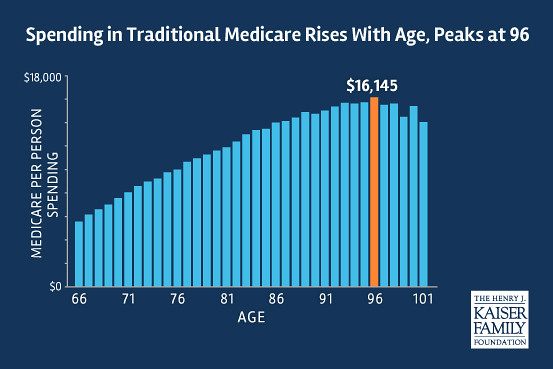Medicare Spending Peaks at Age 96
This was published as a Wall Street Journal Think Tank column on February 10, 2015.
More and more attention is being paid to end-of-life care. But much less attention is going toward what care is appropriate for the very old who are chronically ill but not in their last year of life.
My Kaiser Family Foundation colleagues Tricia Neuman and Juliette Cubanski recently published a finding, captured in the graphic above, that brings this question into focus. They showed that Medicare per capita spending increases steadily with age. It doesn’t flatten out as people move into their 80s or early 90s and, remarkably, it peaks at age 96. Per capita Medicare spending then declines gradually for the relatively small number of beneficiaries at even older ages. Most of the spending goes toward emergency-room visits, inpatient hospital care, skilled nursing facilities, and home health care.
You may be thinking that all this spending is for heroic end-of-life care. But it isn’t. As the study shows, the spending pattern at these older ages is only partly explained by spending for care in the last year of life.
Are we providing too much care as people move through their 80s and 90s? Are the very oldest on Medicare getting the right mix of services in the most appropriate setting? Are we asking the very old how much and what kinds of care they really want? The strong relationship between advancing and advanced age and Medicare spending may or may not signal a problem; certainly, it raises questions–and may point to opportunities for better patient care, quality of life, and lower costs.

